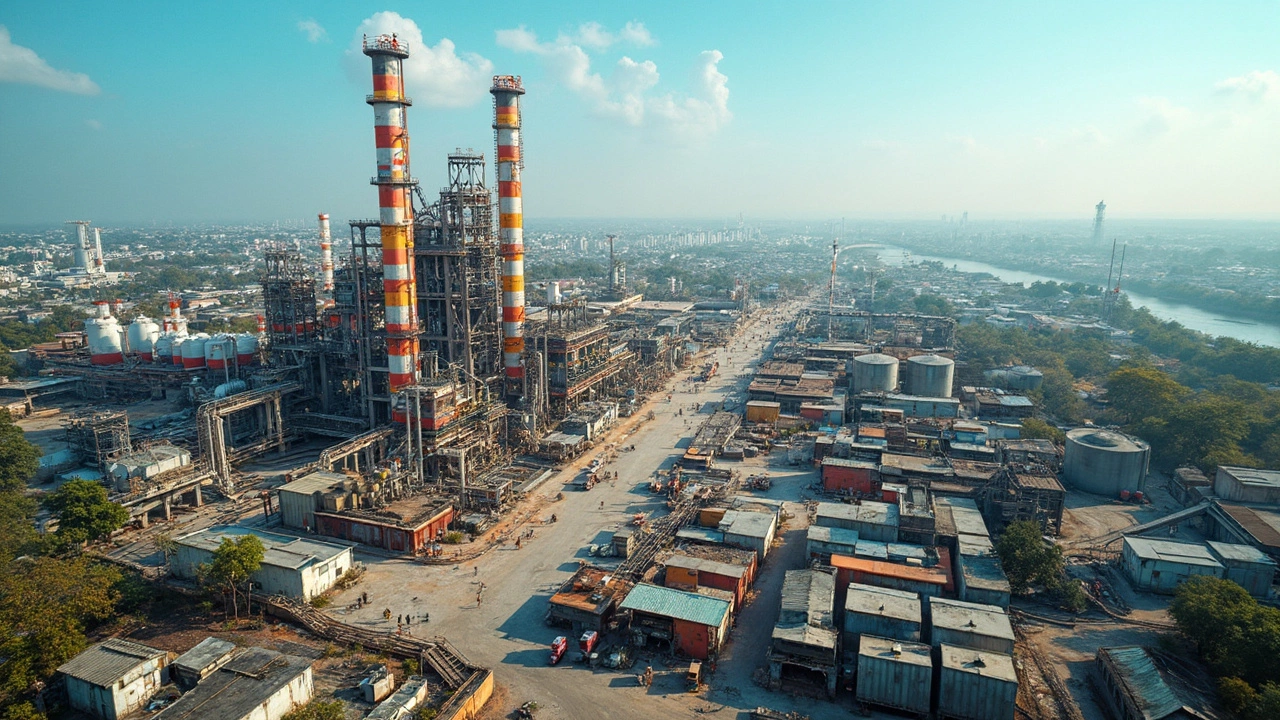- What is the biggest plastic producer company in the world? Oct 28, 2025
- Top 3 Alternative Names for Food Processing Units (CPUs) Feb 24, 2025
- India's No 1 Pharma Company Revealed Feb 26, 2025
- What Are the Advantages of Small Scale Industries? Nov 20, 2025
- Indian Textile Industry Collapse: What Really Happened and What It Means for Manufacturers Apr 23, 2025
Chemical Industry in India: Trends, Opportunities, and Challenges
India’s chemical sector is one of the fastest‑growing parts of the economy. In the last five years the market has added more than 10% each year, thanks to strong demand from pharma, agro‑chemicals, and specialty products. If you’re a supplier, a buyer, or just curious about where the money is flowing, this guide gives you the basics you need to act.
Why the Chemical Sector Is Booming
First, a massive domestic market drives growth. With a population over 1.4 billion, India needs huge volumes of fertilizers, detergents, paints, and plastics. Companies that can produce locally avoid high import duties and long shipping times, which keeps prices competitive.
Second, government policies are a big push. The Production‑Linked Incentive (PLI) scheme offers subsidies for setting up high‑value chemical plants, while the Make‑in‑India agenda encourages foreign investors to build facilities on Indian soil. These incentives lower the upfront cost for new projects and speed up approvals.
Third, technology upgrades are reshaping the landscape. Automation, digital twins, and AI‑based process control help manufacturers cut waste, improve safety, and meet stricter environmental rules. When you pair modern equipment with skilled workers, you get higher yields and lower energy bills.
Challenges and What Companies Can Do
Despite the upside, the sector faces real hurdles. Power supply is still erratic in many industrial zones, which forces plants to rely on generators and raise operating costs. To mitigate this, firms are investing in solar farms and on‑site battery storage, reducing dependence on the grid.
Raw material pricing is another pain point. Many key inputs—like petrochemicals—are imported, making costs vulnerable to global price swings. Smart sourcing strategies, such as long‑term contracts and diversified supplier bases, help lock in rates and avoid sudden spikes.
Environmental compliance is tightening fast. New waste‑water standards and carbon‑emission caps mean older plants must retrofit treatment units or risk penalties. Partnering with engineering firms that specialize in sustainable design lets you upgrade without shutting down production for months.
Finally, talent shortage slows progress. Skilled process engineers and data scientists are in high demand. Companies that invest in on‑the‑job training, apprenticeships, and collaboration with technical institutes see faster adoption of new technologies.
Putting it all together, the chemical industry in India offers big rewards but requires a clear plan. Focus on reliable power, stable raw‑material supply, green compliance, and talent development. When you align these factors with modern manufacturing solutions, you position your business to capture a share of the growing market while staying competitive.
Want to see how the latest manufacturing tech can fit into your chemical plant? Reach out to a partner that specializes in end‑to‑end solutions, from equipment selection to plant commissioning. The right support can turn challenges into stepping stones for growth.
Chemical Manufacturers India: Which State Leads Production?
- Aarav Sekhar
- Jun 16, 2025
Curious about which state tops chemical production in India? This article explains why one state outshines the rest, what drives its growth, and how it impacts the industry. You'll get real numbers, cool facts, and practical tips if you want to get into chemical manufacturing or understand the market. No fluff—just the facts you need. Get ready for a snapshot of India's chemical powerhouse.
India's Second Biggest Chemical Industry Owner: A Look Beyond Reliance
- Aarav Sekhar
- May 5, 2025
India's chemical industry is booming, and while most eyes stay fixed on Reliance Industries, there's fierce competition right behind. This article reveals who stands as India's second biggest chemical industry owner with facts, data, and plenty of insider tips. Learn how this company has grown, what drives its success, and how it handles tough market conditions. If you're curious about India's chemical giants without the usual hype, this is for you. Expect real numbers, company strategies, and clear advice for anyone interested in this powerful industry.

